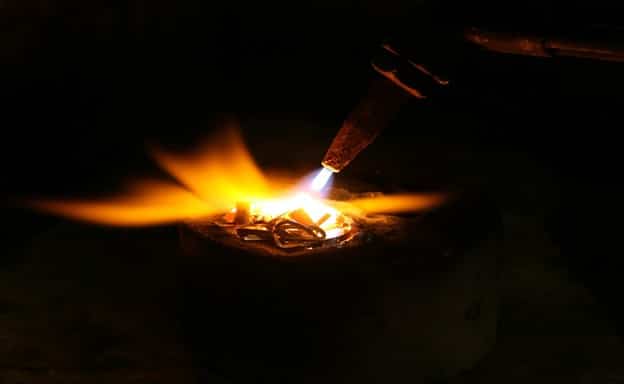More than 50% of manufactured products in the United States require welding at a specific production stage. As an integral part of metal fabrication, welding applications range from the construction industry to the medical industry and the massive auto industry. With such a wide scale of dependence, there is a huge demand for quality welding works.

There are different methods of welding, with MIG welding being the most common. Thanks to its ease of learning, it is widely used by professionals and non-professional welders alike, trying their hand at DIY welding projects. Despite this, welding mistakes are commonplace. Poor welding can be frustrating for DIY-ers, but its effects can be highly adverse in professional industries.
Here are four common mistakes to avoid when MIG welding:
Improper Metal Preparation
Although the welding process may seem straightforward, you risk poor penetration by not adequately preparing the metal surface. Metals may be coated by rust, scale, oil, among other impurities. By preventing the weld from wetting into the base material, these impurities increase the risk of future cracking.
Before welding, it’s advisable to remove any coating using an angle grinder. By eliminating any contaminants, you can save yourself the hassles of constant repair. When done correctly, the weld’s longevity is one of the most significant advantages of MIG welding. Happy clients will be more apt to refer you to other clients based on the long-term guarantee of your work.
Warping
Welding often involves high temperatures, which contribute to warping. Warping is especially rampant when welding numerous beads in a short period. Despite the time-saving advantage, it can lead to excessive distortion. Why hurry to finish a piece of work only for you to start all over again?
To avoid warping issues, welders need to allow the metal to cool between welds. Welds shrink after finalization. With this in mind, it’s advisable to use clamps to prevent metal distortion when welding. Weld sequencing is also crucial if you want the project to retain its initial dimensions.
Inaccurate Distance Between Contact Tip and Workpiece
Correctly gauging the correct distance between the electrode and the workpiece can be a daunting task, especially for new welders. Many will hold it either too close or too far away. Having it too close will cause clogs in the nozzle due to MIG splatter. Keeping it too far will cause inadequate weld fusion, making the weld weak.
When welding, keeping the contact tip close to the metal will ensure the shielding gas creates a proper protective atmosphere to the weld. At the same time, it allows you to see how the puddle flows. Appropriate puddle travel speed can make or break a weld. When you have an accurate distance, the wire melts smoothly into the metal as the puddle moves along.
Poor Wire Speed and Voltage Configuration
When welding, a lot happens within the machine. Two settings work in tandem: wire speed and voltage. New welders may struggle with syncing them together. Typically, the acceptable voltage range is from 16-30 volts, while the wire speed ranges between 100-150 ipm. Small welds require a lower speed-voltage configuration and vice versa.
These two settings are highly interdependent — a high-voltage and low-speed combination results in undercuts due to high heat. A low-voltage and high-speed combination results in unmelted wires due to low heat. Most MIG welding machines will come with a chart providing recommended settings based on the material’s thickness.
Practice Makes Perfect
Despite being an easy method to learn, MIG welding is also prone to many errors. Most of these are avoidable. With proper practice to avoid such mistakes, you can become a proficient MIG welder. With its popularity in numerous industries, it’s a great skill to learn as a professional or as a DIY expert looking to work on creative metal projects.
